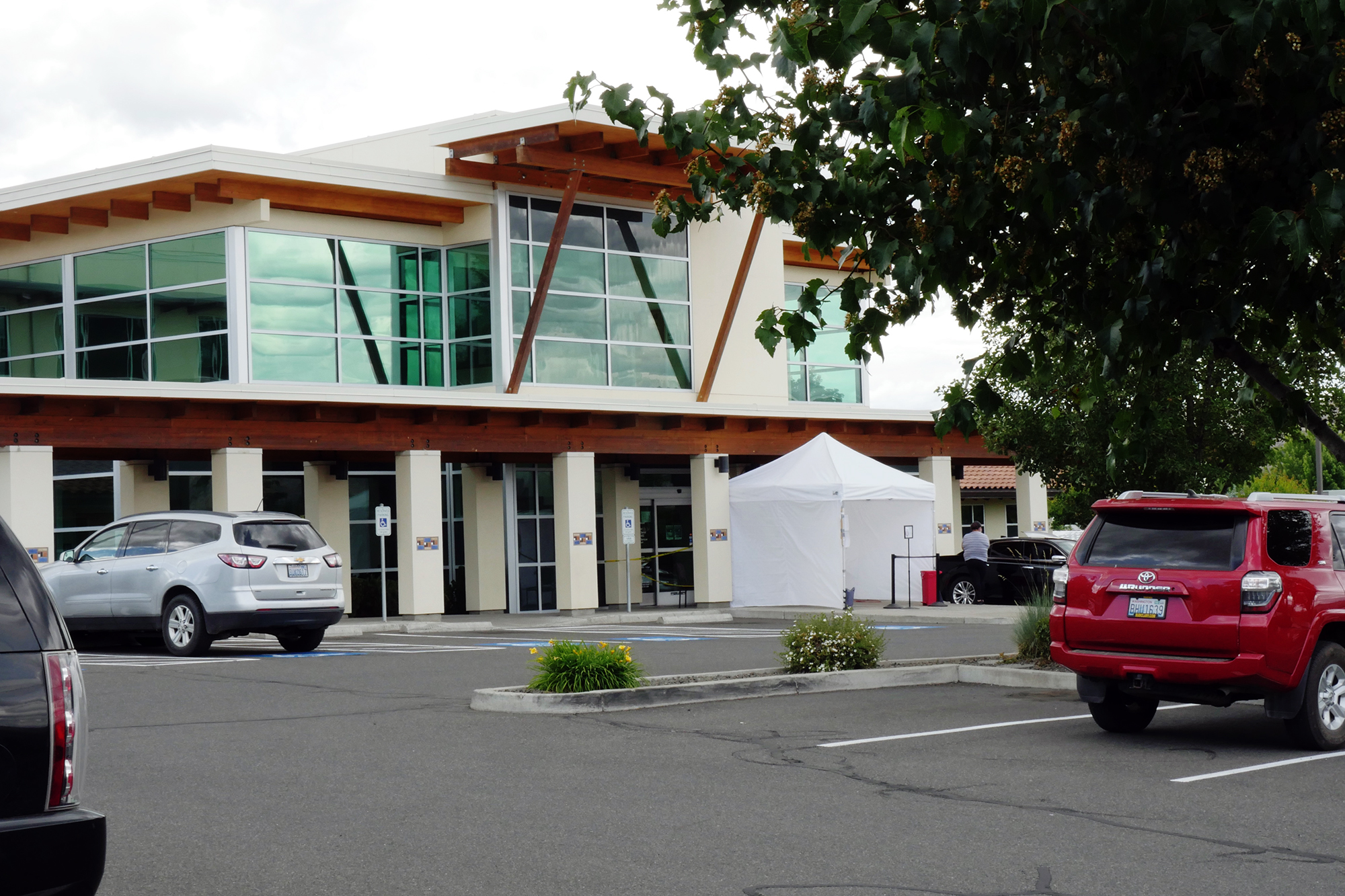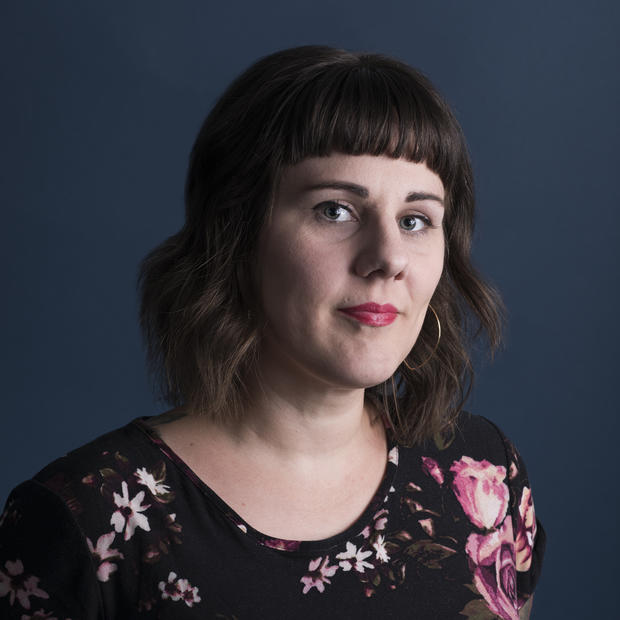“I don't like switching and have to tell my whole life story again,” said Huff, who travels to the clinic in a free 15-minute medical shuttle from Castle Rock, her tiny town of about 2,200 that’s an hour north of Vancouver, Washington. “I like to stay with one person.”
Her clinic is one of Cowlitz Family Health Center's seven medical clinics that span three rural counties that hug the Columbia River: Pacific County on the coast, Wahkiakum County in the middle and Cowlitz County to the east. Not only do the clinics tell the story of rural health care in Washington state, but life at the Cowlitz Family Health Center also illustrates how one health crisis — the coronavirus — may be precipitating another: financial instability in community health that could mean people in small towns and rural areas will have to travel further and further for routine medical care.
The Cowlitz Family Health Center has 14 locations total. Their services include the standard medical, dental and behavioral health care, but they also branch out to provide specialty care, including maternal support and supportive housing for homeless families dealing with substance use disorders.
Is public health funding equal? See how rural communities are faring
Community health centers (CHCs) are the lifeblood of many communities in Washington. There are 27 in the state, and they host more than 350 clinics and sites, serving 1.2 million patients who are primarily on Medicaid, underinsured or uninsured.
After COVID-19 started to spread in the state, Gov. Jay Inslee prohibited all non-urgent dental and elective medical procedures on March 19 to preserve precious personal protective equipment, essentially blocking most of these clinics’ revenue. Their workflow consists mostly of nonemergency medical care and they rely heavily on dental.
On April 15, a financial impact analysis commissioned by the Washington Association for Community Health published two potential scenarios based on financial data from the end of February. The "best case" scenario: 141 community clinical sites gone and over 6,600 full-time staff lost. That would leave half a million Washingtonians without a nearby primary service provider.
That was the happier scenario. The "realistic" case had 167 clinical sites closed and over 8,000 full-time staff gone, leaving more than 600,000 residents with no primary care provider.
On May 18, Inslee announced the restart of medical and dental services in Washington state. Reopening is contingent on each clinic's personal readiness, including availability of PPE, surge capacity, using social distancing and screening patients for symptoms. By May, however, clinics had vastly cut operations, losing millions in revenue. Most could not open at full capacity, instead offering limited appointments and using options like drive-thru checkups and virtual appointments.
Dian Cooper, CEO of the Cowlitz Family Health Center, said they retained two dentists for emergency care during that time, furloughing most of their dentists and dental staff until they received federal money to reemploy them. The Cowlitz clinics are among the few dental providers in all their three counties who accept Medicaid for adults.
So far, the CHC has received $2.9 million in federal dollars and $479,000 for COVID-19 testing. But by the end of April, losses this year totaled $1.4 million. They had 139 days’ worth of cash on hand, which means they could stay afloat for about six months if no more assistance comes through. And that total goes down every day.
“For every month of cash reserves that we have to spend down, it's going to take us two or three months to build them back up in the future,” Cooper said.
Unlike some clinics detailed in the state report, Cowlitz is not at risk of having to close any clinics, but those clinics are currently operating only at 50% capacity. That decreases the number of people in clinic buildings and increases social distancing. The clinics are using telehealth, but because many of their patients are low-income and living in mostly rural areas, not everyone has access to reliable internet or computers, Cooper said.

Community health clinics exist to serve the community, Cooper said, and they play a role in the medical system that can’t necessarily be filled by others.
“For many … of our patients, their only other alternative would be the emergency department for care, which is not a good use of anybody’s health care resources,” Cooper said.
She said that these clinics fill an important health care gap: building relationships with low-income clients to provide preventive care in communities that have few options.
Bob Marsalli is CEO of the Washington Association for Community Health, the member association for CHCs that assists them with policy, advocacy and training.
Marsalli said the reopening of medical and dental services in Washington will not be enough to make up for lost revenue over the quarter of the year, especially because most are opening with limited capacities. It plans to commission a follow-up analysis in midsummer to reassess the status of CHCs.
Because most of the financial assistance the clinics received is one-time assistance, like the federal Coronavirus Aid, Relief and Economic Security, or CARES, Act and the Paycheck Protection Program, it got eaten up very quickly.
Patient decisions not to come in for appointments because they are still skittish about being out in public is also responsible for some of the reduction in income at community health clinics, Marsalli said. The clinics need to become more flexible to make up for these gaps, opening up on weekends or providing drive-thru care in parking lots.
They’re making great efforts to meet the needs of their communities, Marsalli said.
“The community health center system is by design a national response to the needs of the underserved for primary care, so we’ll always be dependent on the Congress’ willingness to authorize the community health center program and to fund it,” Marsalli said. “We cannot afford to allow the community health center safety net to collapse.”
Sheila Berschauer, CEO at the Moses Lake Community Health Center, said her operation has seen a 50% decline in patient revenues. However, it is one of the fortunate CHCs in that it has healthy cash reserves to draw upon. It also received funding through the Health Resources Services Administration, a federal program in the Department of Health and Human Services, as well as benefiting from a federal paycheck protection loan.
To keep as many services as possible available to clients, it started drive-in clinics where a patient pulls up under a carport and the medical team comes outside to deliver care, including blood draws by phlebotomists. Their Moses Lake clinic has seven drive-in “exam rooms” and its Quincy clinic has five.
The Moses Lake Community Health Center started in Grant County in 1978 to serve the seasonal migrant farmworker population. It expanded two years later to open up its services to other uninsured and underserved individuals, Berschauer said, and its mission is to make health care available to all.
“One of the key roles of a community health center is that we don't want health care to be a luxury item,” Berschauer said. Some CHCs serve small towns as the only clinic, some with no hospitals, so they can be the only access point into the health care system.
“We are all about building relationships with our patients, our staff, in our community, because in order to be able to make an impact in someone's life, you have to have a trusting relationship. And health care can be at the foundation of that,” Berschauer said.


